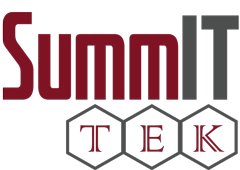Knowing what’s yours is one of the earliest things that you learn as a child. You know you can’t take another kid’s building block in daycare just like how you know you can’t walk into your neighbor’s house and steal their TV. This is the most basic form of property rights: this is mine, not yours. However, there’s also a thing called intellectual property rights; in other words, you can even own something that’s not tangible. Just because you can’t point to it, hold it, or throw it doesn’t mean it’s not real – and it comes with its own set of rights. There are various forms of intellectual property rights, and protecting them means understanding them. We’re here to teach you 5 types of intellectual property rights so that you can better understand how to protect them.
- Copyright
Copyright applies to something that is tangible but rarely physical – say, for example, a song. It is a registered way of saying ‘I created this.’ Copyright is when you’ve created something and have formally requested with the US government to own the rights to it. It’s important to note that copyright only encompasses the expression of an idea, and not the idea itself. You can copyright a jingle about how great you think bananas are, but you can’t copyright bananas.
- Patent
A patent is when you’ve created something that is usable by other people and registered it as yours. You might have created an invention that, say, cracks eggs. You can purchase a patent on that item so that no one else can create your machine that cracks eggs without paying you. A patent is used to prevent another person from taking your idea and creating their version of it for profit. Patents are usually only granted for a period of time, after which anybody can create their version of your machine/invention/idea.
- Trademark
Trademarks are registered symbols that are representative of your business. By ‘symbol,’ we do not mean just logos – they can be words, names, taglines, or phrases. Trademarks are put in place to ensure that your company is represented accurately and fairly. For example, by hearing the phrase ‘Just Do It’ (a trademarked phrase), you automatically know we’re talking about the brand Nike. Nike trademarked that phrase, which is commonly used in its advertising, to ensure that no other shoe brand can use ‘Just Do It’ to market their own products.
- Trade Secrets
Unlike copyrights, patents, and trademarks, trade secrets are not registered through any government process. Trade secrets are far from being uniform – you can consider a recipe, a client list, a manufacturing process, or a sales method a trade secret. Simply put, a trade secret is something confidential that you use that separates you from your competitor. Other companies are not able to use your trade secrets as long as you keep them confidential, and doing so is up to you through the use of non-disclosure agreements and security procedures.
- Trade Dress
A lesser known form of intellectual property, trade dress ties in closely with trademarks. Like trade secrets, you are unable to register trade dress – but it is still a form of intellectual property. Trade dress is, put simply, how you make your product look. If you create dolls, the packaging those dolls come in is a form of trade dress. Your packaging, design, and product appearance is unique to your product, and trade dress comes into play during litigation to prevent other companies from passing off their product as yours (and thereby profiting from it).
To learn more about intellectual property rights, contact our team from Summit-Tek at (702) 827-3800.


